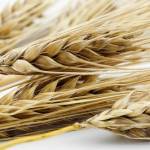Feeding Sprouted Grains to Horses

Traditional horse feed concentrates usually contain various grains—corn, oats, barley—that may be rolled, crushed, or heat-treated to make the nutrients more available. If these grains are sprouted instead of being crushed or otherwise processed before feeding them to horses, the nutrient profile changes significantly on a dry matter basis. Because the seeds lose their high starch content, the sprouted grain becomes more forage than seed. As with lush new pasture grass, the sprouts have a high water content that dilutes the nutrients.
If sprouted fodder is to be fed as the sole source of forage, a horse would have to eat a lot to meet its dry matter requirement. A horse can subsist on the sprouted fodder as the sole source of forage if given enough of it; however, by doing the math, it’s obvious that this feed option might be rather expensive. For example, if the dry matter (DM) requirement for a 1000-lb (950-kg) horse is 20 lb (9 kg) per day and the horse is fed an 85% moisture (15% DM) fodder, then the horse would have to eat more than 130 lb (60 kg) per day of fresh sprouted fodder to meet that dry matter requirement.
In reality, the horse may not need quite that much to subsist. However, the figures illustrate why adding a little hay and/or some concentrate which has 90% DM would help to cut down on the amount of fodder that needs to be fed.








